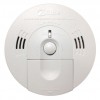 When winter’s frigid temperatures begin to thaw and make way for warmer weather, many people start trying to make improvements to their health and fitness. But this year, why not try setting some goals to improve your home, too? Not sure where to start? Our suggestions will help.
When winter’s frigid temperatures begin to thaw and make way for warmer weather, many people start trying to make improvements to their health and fitness. But this year, why not try setting some goals to improve your home, too? Not sure where to start? Our suggestions will help.
1. Clean Your Dryer Vent to Safeguard Your Home
While you likely know the importance of cleaning your dryer’s lint trap to increase its efficiency, you may not know that you need to clean your dryer vent to prevent a fire. According to Consumer Reports, nearly 7,000 fires, 200 injuries, and 10 deaths each year are due to dryer fires. Failing to clean the dryer is the leading cause of these blazes.
Cleaning the lint screen is important to prevent lint buildup and helping your dryer
work efficiently. But, cleaning the lint trap consistently does not prevent fibers from getting into your dryer vent. When these vents are neglected, lint builds, and a spark can lead to a fire within your vent that can quickly spread to the rest of your home. Clean the dryer vent at least every few months.
If you can pull the dryer away from the wall and access the vent, you can clean your vent yourself. If you can’t, contact a professional. Disconnect the dryer from the power source, disconnect the vent from the dryer, and vacuum both ends using the appropriate attachment on your vacuum.
2. Get Organized
A cluttered home is more difficult to clean, but that’s just one reason to get organized. The other is that clutter contributes to stress and prevents your home from being a sanctuary. In fact, clutter causes confusion and chaos for your family. Organized homes, on the other hand, help you make healthier choices, enhance your relationships, and improve your mental and physical health.
One of the first steps to a home organization plan should be making “keep,” “trash,” and “donate” piles. Set aside time to go through your home, one room at a time, to sort your items and then find places for those that you decide to keep. Make your rooms functional and keep items that you use in the rooms where you will use them. Soon, you’ll find that you are organized and have an easier time cleaning and maintaining a routine.
3. Conduct a DIY Energy Audit
If you want to save money and reduce your energy bills, conduct an energy audit. You can hire a professional to perform this service for as little as $100, or you can do a DIY version. Begin by checking for air leaks around windows, doors, chimneys, and electrical outlets. If you can’t feel drafts, use a lit candle to detect them.
Some easy DIY solutions are to add caulk around windows, install weatherstripping on your door or add a sweep seal to it, and place foam-insulated pads behind outlet covers. You also can wrap insulation around your pipes and place an insulating cover around your water heater.
To make more complex repairs, contact a professional. Contractors can inspect your doors, windows, and chimneys for drafts and make repairs such as replacing windows or exterior doors with energy-efficient models. While replacement windows can be expensive, you will benefit from the improvement by saving energy costs and getting a return on your investment. Many homeowners recoup 80 percent of the project cost in added home value.
A contractor also can replace your front door with a steel door that will improve energy efficiency and drastically update the look of your home. Better yet, steel entry doors have the potential to return about 101.8 percent of your initial home investment upon resale. When you improve the exterior of your home, you benefit by enhancing your curb appeal in addition to saving money on energy bills.
This year, make some of your springtime improvement goals focused on updating your home. Clean your dryer vent to prevent fires. Then, get organized. Finally, conduct a DIY energy audit and tackle simple solutions before calling a contractor to improve the exterior of your home to increase your curb appeal and lower your energy bills.
Article by Rob Woods shared with permission
Image via Pixabay by AllanW
